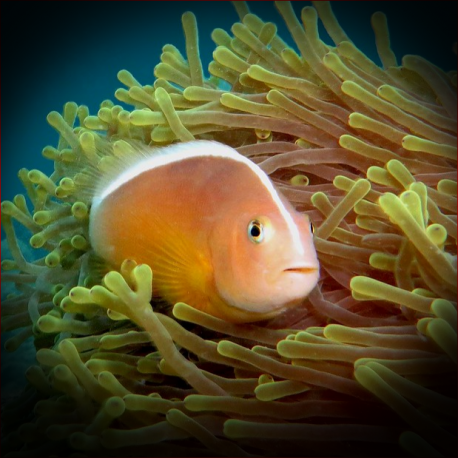More info
Datasheet
| Minimum Tank Size | 100 litres / 26.42 US gallons |
| Maximum Size | 11.0cm / 4.33inches |
| Reef Compatible | Always reef safe |
| Temperament | Might be aggressive towards similar species |
| Temperature | 22.2°C / 71.96°F - 25.6°C / 78.08°F |
| Specific Gravity | 1.020-1.025 |
| Carbonate Hardness | 8-12 |
| pH | 8.1-8.4 |
General Description
The Skunk clownfish (Amphiprion akallopisos), also known as the Skunk anemonefish, belongs to the Pomacentridae family. These fish are characterized by their striking appearance, with a white stripe along their back and vibrant pink/orange coloration. They typically grow to a maximum size of around 11.0cm and are found in the East Indian Ocean, West Indian Ocean, Australia, The Red Sea, Indonesia, and the Central/West Pacific.
Aquarium Suitability
Skunk clownfish are generally suitable for aquariums with care. They are known to be territorial and might display aggression towards similar species if they encroach on their hiding spots. These fish are hardy on average and require a minimum tank size of 100 liters. They are compatible with reef setups and are considered reef-safe.
Demands, Care, and Hardiness
Skunk clownfish are relatively easy to care for in aquariums. They thrive in pairs, with a male and female or two males to one female being ideal. These fish prefer to have their own territory and can become aggressive, especially when hosting an anemone or when protecting their eggs. They are known to change gender, with the female being larger. Skunk clownfish are sensitive during transportation and acclimatization into the aquarium.
Reef Suitability
Skunk clownfish are well-suited for reef aquariums. They might exhibit aggression towards other fish that come too close to their hiding spot but are generally considered reef-safe. These fish are commonly found associating with anemones in the wild.
Aquarium Setup
When setting up an aquarium for Skunk clownfish, it is essential to provide suitable hiding spaces and territories for each fish. They do well in pairs but can also be kept as individuals. These fish thrive in environments with stable water conditions, including a pH range of 8.1-8.4, a specific gravity of 1.020-1.025, and a temperature between 22.2-25.6°C.
Behaviour
Skunk clownfish exhibit interesting social behavior, especially when carrying eggs. They tend to stick together in pairs and are known for their interactions with both their mate and their chosen habitat. These fish can be territorial and may display aggression towards intruders in their space.
Feeding and Diet
Skunk clownfish primarily feed on microalgae like spirulina, small crustaceans such as krill and mysis, and zooplankton like Cyclops and pods. It is recommended to feed them multiple times a day to ensure their nutritional needs are met.
Dimorphism and Captive Reproduction
Skunk clownfish, like many in the Pomacentridae family, can change gender, with the female typically being larger. These fish are known to breed successfully in captivity, and obtaining captive-bred specimens is encouraged to support sustainable practices in the aquarium trade.
Habitat and Distribution
Skunk clownfish are native to the Indo-West Pacific region, including locations such as East Africa, Madagascar, the Comoro Islands, the Seychelles, the Andaman Sea, Sumatra, and the Seribu Islands in the Java Sea. They are commonly found in association with various species of anemones in their natural habitat.

